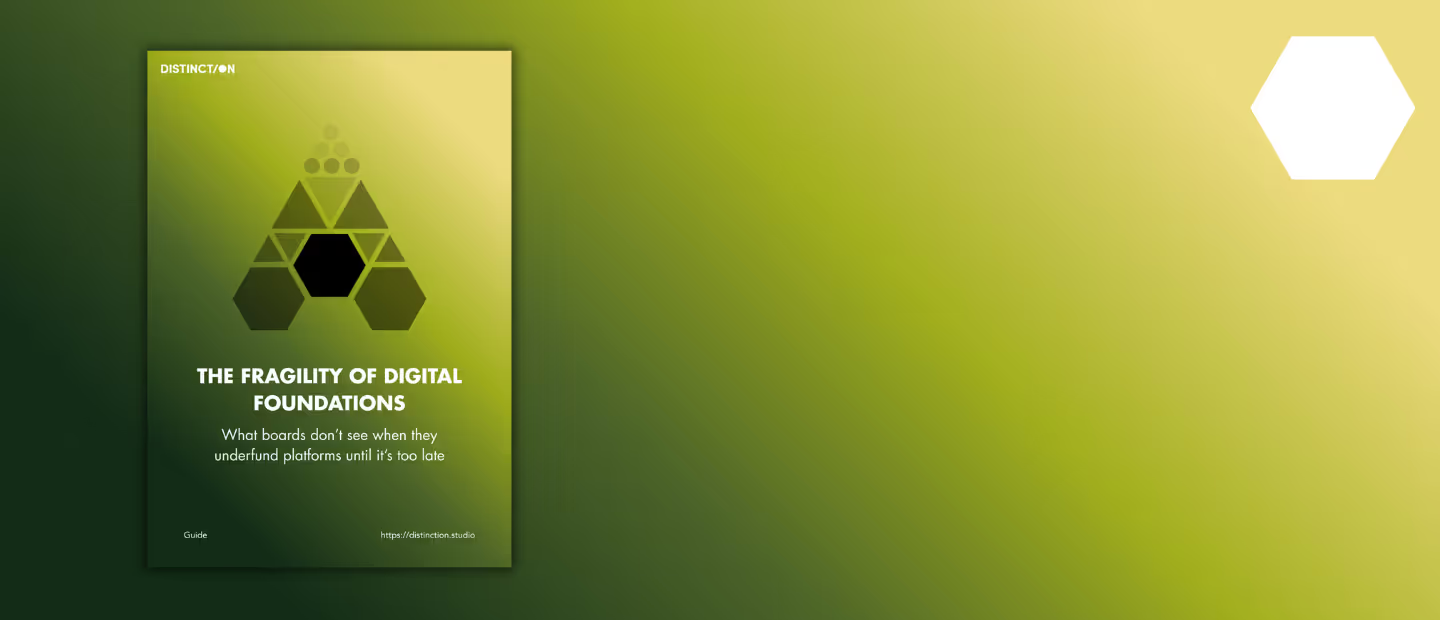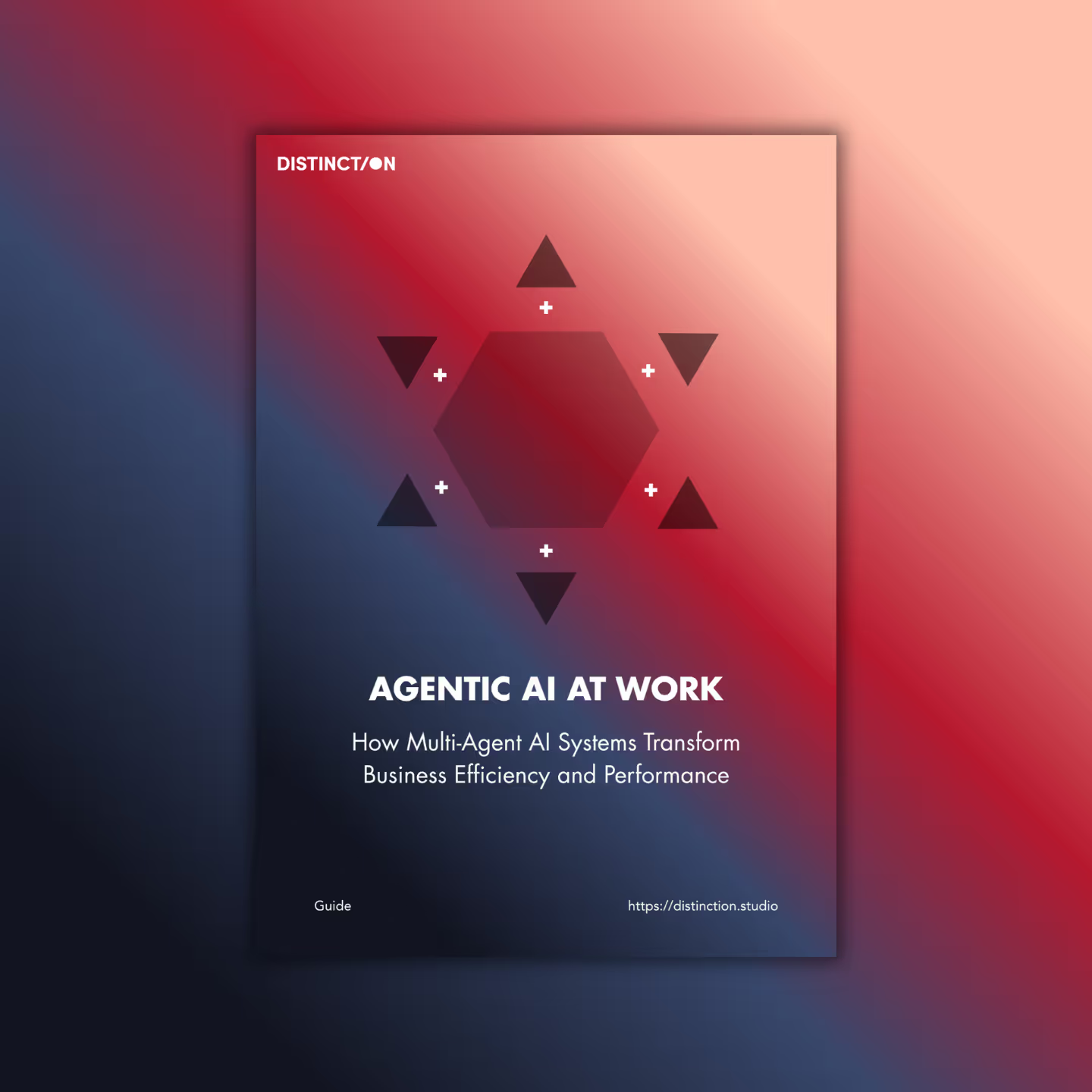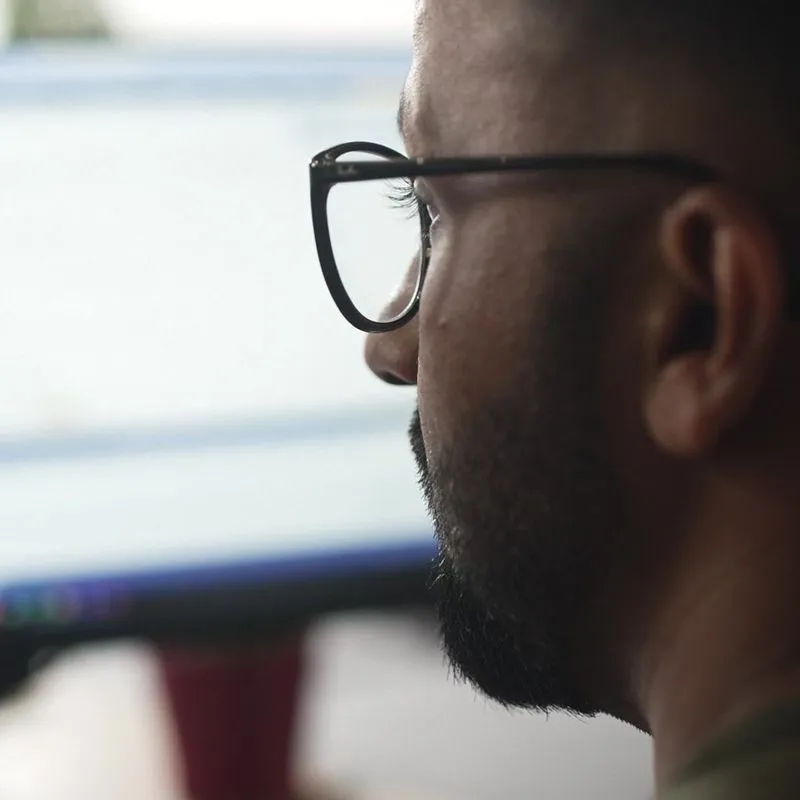

Our Latest Guide
The Fragility of Digital Foundations
In our latest guide, we discuss the key warning signs senior leaders miss. Until it's too late.
Future-proof your digital stack with flexible, tailored solutions.
Is your current system limiting your growth or innovation? We help digital, IT, and marketing leaders select and implement composable and headless platforms built for speed, scale, and adaptability.
Completely replacing or upgrading your digital platform can be daunting.
We make sure you choose the right components for your unique business and stitch them together with minimal disruption. Our approach reduces risk and accelerates time to value.
We start with your business. Not the technology.
We map business goals and technical requirements to find the ideal composable & headless setup.
The outcome... clear requirements aligned to real business needs, not vendor or industry hype!


We conduct an independent evaluation of solutions - CMS, CRM, marketing automation, data analytics, etc.
We score platforms based on factors including business fit, ease of use, vendor roadmap, and total cost of ownership.
The outcome... a short-list of best-fit solutions, saving months of wasted research.
We develop a phased roadmap to avoid disruption and ensure adoption.
We build and connect components for seamless operation within your ecosystem.
The outcome... a smooth rollout with zero business downtime.


After go-live, we monitor adoption and fine-tune the system.
Ongoing support, enhancements, and upgrades to keep you ahead.
The outcome... your tech investment actually drives measurable business improvements.
"The vast knowledge of the whole development team is exceptional. Their knowledge not just of the system our site is on, but also external systems is mind blowing."
At the start of the project, we establish an overarching timeline with key milestones. Regular sprint planning and review meetings ensure that we are consistently aligned with these milestones. During these meetings, we assess progress, address any challenges, and adjust our plan as needed to meet the deadlines.
We use agile methodologies in our development projects and our approach is centred around flexibility and collaboration.
We begin with a comprehensive discovery phase, where we work closely with you to understand your goals, target audience, and functional requirements. This phase sets the foundation for the project.
Following this, we break down the project into smaller, manageable iterations or 'sprints.' Each sprint focuses on a specific set of features or functionalities, allowing for rapid development.
We specialise in website and mobile app design - including both user experience (UX) and user interface (UI) design. If you have a full project in mind a free consultation is the best way for us to offer something bespoke that fits your needs and project goals.
We adopt a mobile-first approach, designing websites that look and function seamlessly across all devices. This involves using responsive design techniques to ensure that layouts, images, and menus adapt fluidly to different screen sizes.
Site user experience (UX) plays a crucial role in conversion rates as it directly impacts how easily and pleasantly users can navigate and interact with your website. If that journey is frustrating for your customers, they will not convert.
To make sure our advice fits perfectly with your business aims, we start off with a detailed chat to really get what you're aiming for and the problems you're facing. Then, we customise our diagnostic sprint to directly tackle these goals, making sure it goes hand-in-hand with your overall business strategy.
A diagnostic sprint involves data-driven analysis to understand user behaviour, rapid testing of changes, and pinpointing UX problems. The outcome is a targeted action plan with prioritised recommendations, offering an efficient approach to boost conversions.
Digital marketing is a component of digital strategy focused specifically on marketing efforts using digital channels. In contrast, digital strategy is broader and includes not only marketing but also other aspects like technology infrastructure, digital product development, and online customer service.
Is a framework where different levels of strategy align and support each other within an organisation. It involves a hierarchy of strategies, typically including corporate, business unit, and functional (tactical) levels. It makes strategy more flexible for us to implement and not disrupt other elements of your business. You can read more about nested strategy here.
Developing a technical strategy involves assessing current technology systems, understanding business objectives, identifying gaps or inefficiencies in current technology use, and creating a plan for technology development and integration that supports business goals.
Any organization that relies on technology for its operations can benefit, regardless of its size or industry. This includes startups, small and medium enterprises, large corporations, non-profits, and government agencies.
The timeframe varies based on the organization's size, complexity, and specific needs. It can range from a few weeks to several months for the initial strategy development, with ongoing adjustments and implementations over time.
The duration varies depending on the scope and complexity of the service being designed or improved. Projects can range from a few weeks to several months.
Deliverables can include service blueprints, customer journey maps, prototypes, strategy documents, and implementation plans.
We begin with an initial diagnostic of your business, which helps identify the key areas.
Typically, our focus is on key areas including:
Security and privacy are paramount in all our work, not just that involving AI.
We adhere to industry best practices and comply with relevant regulations like GDPR to ensure data protection.
Our solutions are designed with robust security measures, including data encryption, secure data storage, and regular security audits. We also implement strict access controls and data governance policies to safeguard your information and ensure that privacy is maintained throughout the AI implementation process.
Sometimes.
We begin with an assessment of your current systems to identify integration points and opportunities.
Our team then designs a customised AI solution that aligns with your business objectives and integrates seamlessly with your existing infrastructure. We focus on minimal disruption, ensuring a smooth transition with training and support for your team to adapt to the new AI-enhanced processes.
Distinction offers an increasingly broad range of AI solutions tailored to various business needs.
These include:
Our solutions are designed to cater to multiple industries, offering custom applications in areas such as finance, healthcare, education, and more.
Each solution is tailored to meet the unique challenges and opportunities of your business, ensuring that you benefit from the most relevant and advanced AI technologies.
The most common mistakes we see in MVP development include:
It's essential to focus on core functionalities that reflect the product's value proposition.
Misinterpreting what the market needs, focusing too much on perfection, and launching too late can also hinder the success of an MVP.
Avoid making big assumptions without proof (ideally backed up by data) and ensure to gather and act on user feedback to iterate and improve the product continuously.
The key components of an MVP include just enough features to satisfy (ideally delight) early customers and provide feedback for future product development.
The essential features are those that solve the core problem for your target audience, which obviously vary from product to product.
The MVP should include a basic user interface, essential functionalities to test the primary hypothesis, and enough value to make the user interested in the product. 'Enough value' is a subjective measure, and will also vary from product to product.
It should also be able to collect user feedback effectively for future improvements. The focus should be on simplicity and the minimum set of features to address the primary need of your target market.
An MVP differs significantly from a prototype and a full-fledged product.
A prototype is a preliminary model to explore ideas and design concepts, not necessarily intended for release to the public. It's more about testing a concept than a market-ready product.
In contrast, an MVP is a simplified version of the product, developed with enough features to attract early adopters and validate a product idea early in the product development cycle.
A full-fledged product is a completely developed product with all intended features and functionalities, ready for the mass market.
We elaborate on the differences between and MVP and a prototype in our journal.
A Minimum Viable Product (MVP) is a development technique where a new product is introduced with basic features to satisfy (ideally delight) early adopters.
The main goal of an MVP is to quickly gather user feedback to iterate and improve the product.
It's crucial because it allows businesses to test a product hypothesis with minimal resources, reduce time to market, and avoid long and potentially unnecessary work.
An MVP helps in identifying the interest of the target audience and gathers valuable insights about customers' needs and preferences, which can guide future development.
We elaborate on this in our guide to MVPs.
Best practices for creating and maintaining a design system include:
Creating clear documentation is also important as it helps in maintaining consistency and guides new team members.
A style guide provides detailed guidelines on the visual aspects of branding (like color, typography, and logo usage).
A pattern library is a collection of design elements (like buttons, forms, and navigation bars).
But a design system integrates these aspects with broader design principles and practices. It encompasses style guides and pattern libraries but also includes coding standards, best practices, and a philosophical approach to design, ensuring a cohesive and consistent user experience across all platforms.
Digital branding, while sharing some commonalities with traditional branding, represents a more focused approach tailored to the digital world. Traditional branding encompasses a wide range of marketing and identity-building strategies across various platforms, including print media, television, and radio. Its primary goal is to create a recognizable brand identity and image that resonates with consumers broadly.
In contrast, digital branding zeroes in on the internet and digital platforms. It involves creating and establishing a brand's presence across digital channels such as websites, social media, mobile applications, and online advertising. The key difference lies in the medium and the audience's engagement level. Digital branding is not just about logos and taglines; it's about creating a complete digital experience for the consumer. This experience includes interactive and engaging content, online customer service, and a consistent brand voice and personality that's evident across all digital platforms.
One of the primary distinctions is the level of interactivity and engagement that digital branding offers. While traditional branding is often a one-way communication (from brand to consumer), digital branding allows for two-way interactions. Through social media, blogs, and online reviews, consumers can engage directly with the brand, providing feedback, asking questions, and having conversations. This interaction fosters a deeper connection and a more personalized relationship between the brand and its consumers.
Another critical aspect of digital branding is data analytics. Digital platforms provide a wealth of data that can be analyzed to understand consumer behavior, preferences, and trends. Brands can use this data to tailor their marketing strategies, personalize consumer experiences, and make informed decisions about product development and branding strategies.
In summary, digital branding is an evolution of traditional branding, adapted for the digital age. It's about creating a comprehensive, interactive, and data-driven brand presence online, where engagement and personalization are key.
We're agnostic. We use a range of modern technologies tailored to the project's needs, including:
This enables us to choose the right technology stack that aligns with the project's goals and the long-term vision.
You can read more about our technology partners here.
The approach towards web and mobile design involves crafting intuitive designs tailored to the platform.
For web design, the focus is on creating a lasting digital impact, while mobile design emphasises seamless user engagement in a mobile-centric world.
The distinct strategies for each platform ensure an optimal user experience, irrespective of the device used.
Methodologies employed focus on intuitiveness, ease of use, and aesthetic appeal, ensuring the UI complements the UX while meeting the company's strategic goals.
Prototyping is crucial for visualising the final product and gathering early feedback.
The prototyping service transforms concepts into tangible (often clickable) visuals, bridging the gap between imagination and reality.
This iterative process of prototyping, testing, and refining helps in identifying design issues early, saving time and resources in the long run.
Creating a Minimum Viable Product (MVP) involves identifying and implementing the core functionalities that showcase the product's value, then launching to get user feedback to evolve the product.
The evolution from MVP to a full-fledged digital product is a structured process that entails iterative design, user testing, and feedback incorporation.
This iterative process ensures that the product continually improves and aligns with market demands, eventually culminating in a well-rounded digital product
The essence of user-centricity lies in understanding and addressing user needs and preferences.
We employ a holistic approach to product design that goes beyond aesthetics, focusing on creating experiences that resonate with users. Through in-depth market analysis, user interviews, and feedback loops, user feedback is continuously incorporated into the design process, making the product evolve in alignment with user expectations.
The process is tailored by selecting the right research methods (qualitative vs. quantitative, interviews vs. workshops, online vs. in-person, etc.) whilst remaining true to our approach of empathising, defining, creating, and testing & reporting. You may already have completed some of the research, for example, and we would not need to do it.
The outputs are also tailored to meet the needs of the engagement.
This flexibility ensures that the process uncovers opportunities and identifies risks specific to your project.
User testing methods may include usability testing, interviews, and surveys. Feedback from these tests is crucial for refining the product, and is incorporated into the product roadmap to ensure alignment with user needs and expectations.
The key deliverable is a report, which provides a clearer understanding of user needs. Depending on the project, it is sometimes supplemented by wireframes, UX designs, clickable prototypes, technology recommendations and so on.
The product discovery process lasts approximately 5-8 weeks, but this can vary depending on stakeholder availability and complexity of research.
Having a better understanding of users leads to cost savings by ensuring that the right features/functionality in your product are built right the first time.
It clarifies what users want and how they'll use the product, leading to a better user experience and a more efficient development process.
The product discovery process enhances product-market fit by filtering out bad ideas early on - saving wasted time, money, and effort. It helps focus all efforts on building the right product, for the right audience.
It employs a team of experts to validate your idea against market demand, ensuring a better chance of success.
To validate market demand, the process engages in stakeholder and user interviews, competitor and market analysis. This rigorous validation helps to avoid mis-reading market demand, a primary reason for startup failure.